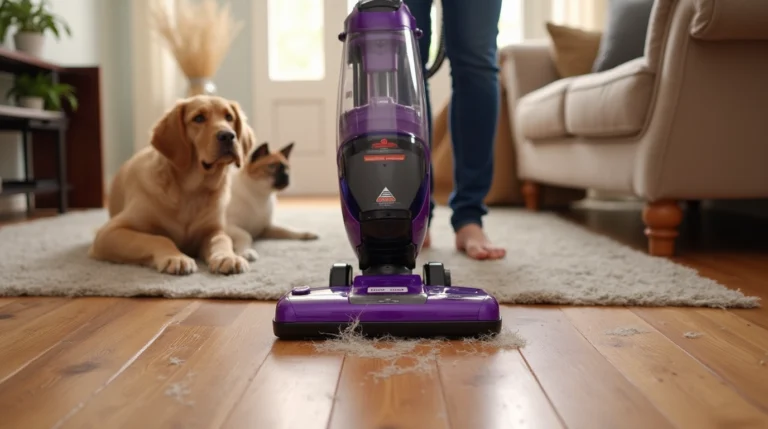Discover everything you need to know about pet screening processes in rental housing – from technology innovations to best practices for property managers and pet owners.
Table of Contents
The relationship between landlords, property managers, and pet-owning tenants has evolved significantly in recent years. As pet ownership continues to rise—with approximately 70% of U.S. households now including at least one pet according to the American Pet Products Association—the rental market has had to adapt accordingly. Enter pet screening, a systematic process that has transformed how rental properties evaluate and approve animal companions. This comprehensive evaluation goes beyond simple pet policies, offering property owners data-driven insights while providing responsible pet owners with opportunities to showcase their pets as excellent tenants. Whether you’re a property manager looking to implement more effective pet policies, a landlord concerned about potential property damage, or a pet owner navigating the increasingly complex rental landscape, understanding the nuances of pet screening has become essential in today’s housing market. This guide explores the seven most critical aspects of pet screening processes, helping all stakeholders navigate this important aspect of modern rental management with confidence and clarity.
1. What Exactly Is Pet Screening and Why It’s Becoming Standard Practice
Defining Modern Pet Screening
Pet screening represents a formalized evaluation process designed to assess pets before approving them for residence in rental properties. Unlike traditional approaches that might have relied solely on breed restrictions or blanket pet deposits, modern pet screening employs a more sophisticated, data-driven methodology. At its core, pet screening involves collecting detailed information about pets, verifying their health and behavior records, and evaluating their potential impact on a property and community.
The comprehensive nature of today’s pet screening typically includes:
- Collection of detailed pet information (species, breed, age, weight, etc.)
- Verification of vaccination and licensing compliance
- Assessment of pet training and behavioral history
- Review of pet references from previous landlords or veterinarians
- Documentation of pet photos for identification purposes
- Evaluation of owner responsibility based on care history
The Growth of Professional Pet Screening Services
The pet screening industry has expanded significantly over the past decade, with specialized services now facilitating the process for thousands of properties nationwide. Companies like PetScreening.com, PetAssure, and MyPetProfile have developed sophisticated platforms that standardize the evaluation process while providing valuable data analytics to property managers.
According to industry reports, the adoption of formal pet screening processes has increased by approximately 65% among mid-to-large property management companies since 2018. This growth reflects a broader recognition of pets as important members of tenant households that deserve thoughtful consideration rather than arbitrary restrictions.
Why Pet Screening Has Become Standard Practice
Several converging factors explain why pet screening has evolved from an occasional practice to a rental industry standard:
Risk Management Efficiency
Property managers have recognized that detailed pet screening provides more effective risk assessment than broad policies based solely on pet type or breed. Comprehensive screening helps identify truly problematic pets while welcoming well-behaved animals, optimizing occupancy rates while minimizing genuine risk.
Growing Pet Ownership Demographics
As millennial and Gen Z renters—demographics with particularly high rates of pet ownership—constitute an increasing percentage of the rental market, properties that effectively accommodate pets gain significant competitive advantages. A 2022 Apartments.com survey found that 83% of pet-owning renters reported difficulty finding pet-friendly housing, indicating substantial market potential for properties with sophisticated pet approval processes.
Insurance Industry Influence
Changes in liability insurance policies for rental properties have increasingly pushed property managers toward formalized pet evaluations rather than breed-based restrictions. Many insurance providers now favor properties with comprehensive pet screening protocols over those with simple breed bans, which have proven less effective at preventing incidents.
Legal and Fair Housing Considerations
The rising importance of assistance animals under Fair Housing regulations has necessitated more structured approaches to differentiating between pets and support animals. Formal pet screening processes help properties navigate these distinctions while maintaining appropriate documentation.
James Martinez, property manager for a 250-unit apartment complex in Denver, explains: “Implementing a professional pet screening service fundamentally changed our approach to pet-friendly housing. Rather than maintaining outdated breed restrictions that weren’t backed by data, we now evaluate each pet individually. Our property damage has actually decreased by about 15% since making this switch, while our pet-owning tenant population has increased by nearly 30%.”

2. The Pet Screening Process: What to Expect and How to Prepare
Typical Components of a Pet Screening Evaluation
The pet screening process typically follows a structured format, regardless of whether it’s conducted through an in-house system or a third-party service. Pet owners can generally expect to encounter these key components:
Application Forms
Most screenings begin with a detailed questionnaire capturing essential information:
- Pet’s basic details (name, species, breed, age, weight)
- Spay/neuter status and microchip information
- Vaccination records and licensing compliance
- Training history and behavioral characteristics
- Previous rental history with the pet
Documentation Requirements
Supporting materials frequently requested include:
- Clear, recent photographs of the pet (often from multiple angles)
- Veterinary records confirming vaccinations and health status
- License documentation if required by local ordinances
- Training certificates or behavioral assessments (if available)
- Previous landlord references regarding the pet’s tenancy
In-Person or Virtual Evaluation
Some properties supplement paperwork with direct observation:
- In-person meeting with property staff
- Video call evaluation for remote applicants
- Behavioral assessment in environments similar to the rental property
- Interaction observation with other people or animals (where applicable)
Fee Structure
Most formal pet screening services involve some cost component:
- Processing fees typically range from $20-$50 per pet
- Renewal or update fees for annual re-screenings
- Possible discounts for multiple pets or returning tenants
- Assistance animal accommodation request evaluations (often conducted separately)
Preparation Tips for Pet Owners
For pet owners approaching a pet screening evaluation, proper preparation significantly improves the likelihood of approval. Consider these preparation strategies:
Documentation Organization
- Compile a “pet resume” with your animal’s history and positive attributes
- Ensure vaccination records are current and readily accessible
- Gather reference letters from previous landlords specifically addressing pet behavior
- Have training certificates or completed class information available
- Prepare a pet emergency plan demonstrating responsible ownership
Pet Presentation Optimization
- Schedule professional grooming prior to any in-person evaluations
- Ensure your pet is comfortable with basic commands if behavioral assessment is expected
- Practice introducing your pet to new people if the screening includes in-person meetings
- Consider recent, high-quality photographs that present your pet positively
- Be prepared to honestly discuss any behavioral challenges and your management strategies
Sarah Thompson, who successfully navigated pet screening with her two large mixed-breed dogs, shares: “I created comprehensive ‘pet resumes’ for both my dogs, including photos, their training history, and statements from our previous landlord and veterinarian. I also recorded short videos showing their calm behavior inside our previous apartment. The property manager later told me this level of preparation made their approval decision easy despite my dogs exceeding their typical weight restrictions.”
Timeline Expectations
Pet owners should be aware of typical processing timeframes when planning their rental search:
| Screening Type | Typical Processing Time | Best Practice for Tenants |
|---|---|---|
| Basic in-house screening | 24-48 hours | Apply at least 3 days before needing approval |
| Third-party professional screening | 2-5 business days | Apply at least 1 week before needing approval |
| Screening with veterinary verification | 3-7 business days | Apply at least 10 days before needing approval |
| Screening with behavioral assessment | 5-10 business days | Apply at least 2 weeks before needing approval |
3. Benefits of Pet Screening for Property Managers and Landlords
Data-Driven Risk Management
One of the primary advantages of formal pet screening for property owners is the shift from subjective to objective risk assessment. Professional screening processes provide:
Standardized Evaluation Metrics
Instead of relying on personal impressions or outdated assumptions about certain breeds, comprehensive screening uses consistent criteria to evaluate each animal—resulting in more equitable and defensible decisions.
Behavioral History Documentation
Professional screening captures behavioral history that might indicate potential property risks, allowing for informed decisions rather than assumptions based solely on physical characteristics.
Liability Protection
By documenting a thorough screening process, property managers create a record of due diligence that can provide significant liability protection if incidents do occur. This documentation demonstrates reasonable care in tenant selection.
A 2021 National Apartment Association study found that properties implementing professional pet screening reported 28% fewer pet-related incidents compared to properties using only traditional pet policies.
Financial Benefits Beyond Basic Pet Fees
Well-designed pet screening systems offer revenue opportunities that extend beyond traditional pet deposits:
Tiered Pet Risk Assessment Fees
Many screening programs establish risk-based fee structures where higher-risk pets (based on objective criteria) may incur additional fees, while exceptionally well-qualified pets might qualify for reduced fees.
Decreased Turnover Costs
Properties with sophisticated pet policies typically experience longer average tenancies from pet owners, who face more limited housing options and therefore tend to renew leases at higher rates. The National Apartment Association estimates that each tenant turnover costs approximately $1,000-$3,000, making tenant retention particularly valuable.
Reduced Vacancy Rates
By safely expanding the pet-friendly applicant pool, properties can significantly reduce vacancy periods. A 2022 FIREPAW study found that pet-friendly units rented, on average, 10 days faster than units with no-pet policies.
Community Cohesion and Tenant Satisfaction
Beyond financial considerations, pet screening contributes to stronger rental communities:
Improved Pet Owner Accountability
Formal screening processes create clear expectations regarding pet behavior and owner responsibility from the beginning of the tenancy.
Enhanced Community Harmony
By ensuring pets in the community are appropriately vetted, properly vaccinated, and owned by responsible individuals, screening reduces potential conflicts between pet-owning and non-pet-owning residents.
Positive Brand Reputation
Properties with thoughtful, well-managed pet policies (versus simply being “pet-friendly” or “no pets”) tend to receive higher tenant satisfaction ratings and more positive online reviews.
Jennifer Williams, regional property manager for a company overseeing 15 apartment communities, notes: “After implementing comprehensive pet screening across our properties, we’ve seen a 22% reduction in pet-related complaints between neighbors. The screening process educates pet owners about expectations before they even move in, setting a foundation for responsible pet ownership within our communities.”
4. Understanding the Distinction Between Pets and Assistance Animals
Legal Frameworks Governing Assistance Animals
One of the most critical aspects of pet screening involves correctly distinguishing between pets and legally protected assistance animals. This distinction carries significant legal implications for property managers.
Key Federal Regulations
Two primary federal frameworks govern assistance animals in housing:
- Fair Housing Act (FHA): Requires housing providers to make reasonable accommodations for assistance animals, including those that would otherwise be prohibited by pet policies
- Americans with Disabilities Act (ADA): Covers service animals (primarily dogs) in public accommodations, with more limited application to residential settings
Categories of Assistance Animals
Within these legal frameworks, assistance animals typically fall into two categories:
- Service Animals: Trained to perform specific tasks directly related to a person’s disability (examples include guide dogs for the visually impaired or seizure alert dogs)
- Emotional Support Animals (ESAs): Provide comfort through their presence but aren’t trained for specific tasks; require documentation connecting the animal’s presence to a disability-related need
How Pet Screening Addresses Assistance Animal Requests
Modern pet screening systems have developed specialized protocols for handling assistance animal accommodation requests:
Documentation Verification
Professional screening services often include processes to verify the authenticity of documentation supporting assistance animal requests, helping properties avoid fraudulent claims while respecting legitimate needs.
Separate Evaluation Pathways
Most comprehensive screening systems establish distinct evaluation tracks for pets versus assistance animals, ensuring appropriate handling of each category.
Reasonable Accommodation Interactive Process
Effective screening systems facilitate the required “interactive process” between housing providers and residents requesting accommodations, documenting each step for legal compliance.
Appropriate Fee Structures
Professional screening helps properties navigate the important distinction that assistance animals are not subject to pet fees, deposits, or breed/weight restrictions that might apply to pets.
Common Misconceptions and Compliance Pitfalls
Property managers implementing pet screening should be aware of these frequent compliance issues:
Excessive Documentation Requests
Requesting extensive medical records or requiring assistance animals to “qualify” through behavioral assessments may violate fair housing laws.
Automatic Denials Based on Species or Breed
While certain restrictions might apply to pets, assistance animals typically cannot be rejected based solely on breed, species, or size.
Surcharges and Deposits
Properties cannot charge additional fees or deposits for assistance animals, though residents remain responsible for any damage caused.
Online Certification Issues
While online “certification” or “registration” services for emotional support animals have proliferated, HUD guidance clarifies that such registrations alone are generally insufficient as documentation.
Legal expert Maria Rodriguez explains: “The most common mistake I see properties make is failing to establish separate, compliant processes for assistance animals within their pet screening protocols. A well-designed screening system should immediately recognize assistance animal accommodation requests and route them through appropriate verification channels without applying standard pet criteria.”
5. Breed Restrictions vs. Behavior-Based Assessments
The Evolution Away from Breed Restrictions
Historically, many rental properties relied heavily on breed restrictions as their primary pet screening method. However, this approach has faced increasing challenges:
Scientific and Veterinary Perspectives
The American Veterinary Medical Association, the Centers for Disease Control and Prevention, and numerous animal behavior experts have published research indicating that breed alone is a poor predictor of an individual dog’s behavior or risk level.
Insurance Industry Shifts
Many insurance carriers that once mandated specific breed restrictions have moved toward more nuanced policies that consider property-wide pet policies and individual animal assessment rather than categorical breed exclusions.
Municipal Ordinance Changes
Over 200 municipalities have enacted ordinances prohibiting breed-discriminatory policies, creating potential legal conflicts for properties maintaining traditional breed restrictions.
Modern Behavior-Based Assessment Models
Contemporary pet screening increasingly emphasizes behavioral history and individual assessment rather than breed generalizations:
Objective Behavioral Indicators
Modern screening evaluates factors with stronger predictive value for property risk:
- Bite history documentation
- Destructive behavior patterns
- Excessive noise complaints
- Training history verification
- Previous successful rental housing history
Standardized Assessment Tools
Professional screening services often employ validated assessment questionnaires developed by animal behavior specialists to evaluate temperament factors relevant to successful tenancy.
Weight and Size Considerations
Rather than blanket breed bans, some properties now implement reasonable weight limitations based on actual unit size and property layout considerations while allowing exceptions for well-qualified larger pets.
Implementing Balanced Screening Approaches
Property managers seeking effective pet screening increasingly adopt hybrid approaches:
Individual Assessment Priority
While properties may maintain restrictions for certain high-risk categories (such as dogs with documented bite histories), individual assessment takes precedence over breed generalizations.
Reasonable Accommodation Processes
Well-designed policies include clear procedures for pet owners to request exceptions to general guidelines based on their specific pet’s history and temperament.
Clear Behavioral Expectations
Instead of focusing primarily on what pets are prohibited, effective screening establishes clear expectations for all approved pets regardless of breed or type.
Dr. Amanda Chen, veterinary behaviorist, notes: “The most effective pet screening systems I’ve seen evaluate the individual animal’s behavior history, the owner’s pet management practices, and the specific living situation. This approach is not only more accurate in identifying potential issues but also more equitable for responsible owners of breeds that face discrimination despite their individual pet’s excellent behavior.”
6. Technology Innovations Streamlining Pet Screening
Digital Platforms Transforming the Process
Technology has revolutionized pet screening, introducing efficiencies and capabilities that were unavailable just a few years ago:
Centralized Digital Pet Profiles
Leading screening services now create portable pet profiles that include verified vaccination records, photos, behavior histories, and previous rental experiences. These profiles can follow pets from property to property, streamlining future applications.
Integrated Property Management Systems
Many pet screening platforms now integrate directly with popular property management software, automatically updating resident records and facilitating seamless communication between screening results and leasing documentation.
Mobile Application Processes
User-friendly mobile applications allow pet owners to complete screening requirements from anywhere, uploading documentation, submitting photos, and paying fees without visiting leasing offices.
Verification Automation
Advanced systems can automatically verify certain aspects of pet applications, such as checking microchip registrations, confirming licensing compliance through municipal databases, and validating veterinary records through clinic partnerships.
AI and Machine Learning Applications
Artificial intelligence and machine learning have begun to enhance pet screening effectiveness:
Pattern Recognition for Risk Assessment
Machine learning algorithms analyze thousands of pet tenancies to identify patterns that correlate with successful residency or potential issues, helping refine risk models beyond simple breed or size considerations.
Photo Verification Technology
AI-powered image analysis can verify pet breed identification, estimate size and weight from photographs, and even flag concerning visual elements (such as environmental conditions suggesting neglect).
Document Authentication
Advanced systems employ AI to detect potentially fraudulent documentation, particularly important for verification of assistance animal letters and certificates.
Behavioral Prediction Models
Some cutting-edge platforms are developing predictive models that correlate pet history, training, and owner characteristics with likely tenancy outcomes.
Future Technological Developments
The pet screening technology landscape continues to evolve rapidly with several emerging trends:
Blockchain Verification
Several companies are exploring blockchain technology to create tamper-proof records of pet history, vaccinations, and behavioral assessments that can be securely shared across properties.
Video Assessment Tools
Remote behavioral evaluations using standardized video protocols allow for more objective assessment without requiring in-person meetings.
Wearable Integration
Some screening platforms are beginning to integrate with pet wearable technology that can provide objective data on activity levels, barking frequency, and other behaviors relevant to residential compatibility.
Biometric Identification
Emerging technologies for pet nose-print or facial recognition provide tamper-proof identification that ensures the screened pet is indeed the one residing in the property.
Technology consultant Ryan Park observes: “The most significant impact of technology on pet screening has been the shift from isolated property-by-property evaluations to comprehensive digital pet profiles that follow animals throughout their lives. This creates efficiency for property managers while rewarding responsible pet owners with streamlined approval processes based on verified positive history.”
7. Best Practices for Implementing Effective Pet Screening Policies
For Property Managers and Owners
Creating an effective pet screening policy requires balancing various stakeholder needs while maintaining legal compliance:
Develop Clear, Written Policies
Successful pet screening begins with comprehensive written policies that address:
- Types of pets permitted
- Number of pets allowed per unit
- Size or weight considerations
- Vaccination requirements
- Pet behavior expectations
- Screening processes and timeline
- Fee structures and deposits
- Assistance animal accommodation procedures
Staff Training and Consistency
Ensure all property staff understand:
- The distinction between pets and assistance animals
- How to consistently apply screening criteria
- Fair housing implications of pet policies
- Appropriate communication regarding pet policies
- Documentation requirements for screening decisions
Regular Policy Review and Updating
Effective pet policies should be living documents:
- Schedule annual reviews of pet policy effectiveness
- Track and analyze pet-related incidents and outcomes
- Remain current with changing legal requirements
- Adjust based on property-specific experiences
- Incorporate new technology and screening capabilities
Transparent Communication
Successful implementation requires clear stakeholder communication:
- Publish pet policies prominently on property websites
- Include screening requirements in all advertising materials
- Provide detailed information during initial property tours
- Create informational materials explaining the screening process
- Offer guidance resources for prospective pet-owning applicants
For Pet Owners Navigating the Process
Pet owners can maximize their success with pet screening by following these recommendations:
Prepare Comprehensive Documentation
- Maintain organized, up-to-date vaccination records
- Collect reference letters from previous landlords specifically addressing pet behavior
- Document training classes, certifications, or behavioral assessments
- Prepare clear, well-lit photographs of your pet
- Consider creating a “pet resume” highlighting positive attributes and history
Address Potential Concerns Proactively
- Acknowledge any breed, size, or behavioral characteristics that might raise concerns
- Explain management strategies for any potential issues
- Offer additional security deposits where legally permitted
- Propose meet-and-greet opportunities to demonstrate your pet’s temperament
- Consider obtaining renter’s insurance with specific pet coverage
Understand Your Rights and Responsibilities
- Familiarize yourself with local pet ordinances and housing laws
- Know the distinction between pets and legally protected assistance animals
- Understand pet-related lease obligations before signing
- Recognize the importance of reporting any pet behavior changes or incidents
- Maintain compliance with all pet-related lease terms
Property manager Sophia Washington shares: “The most successful pet approvals come from owners who approach pet screening as an opportunity to showcase their responsible ownership rather than an obstacle to overcome. When applicants provide thorough documentation, acknowledge any potential concerns honestly, and demonstrate their commitment to being good neighbors, approval becomes much more likely—even for pets that might not meet traditional criteria.”
FAQ Section
What information will I need to provide during pet screening?
Typical pet screening requires:
- Basic pet information (species, breed, age, weight, name)
- Vaccination records showing current rabies, distemper, and other required vaccines
- Spay/neuter status documentation
- Microchip information if applicable
- Photos of your pet (usually full body shots from different angles)
- Information about previous rental history with the pet
- Details about training or behavioral certifications
- Veterinarian contact information for verification
- References from previous landlords or property managers
- Information about your pet’s typical daily schedule and care routine
More comprehensive screening might also request information about pet insurance, emergency care plans, and specific behavioral history.
How much does pet screening typically cost?
Pet screening fees vary depending on the property and the screening service used:
- Basic in-house screening: $0-25 per pet
- Professional third-party screening: $20-50 per pet
- Renewal/update screening (annual): $10-25 per pet
Some properties absorb these costs while others pass them to applicants. Additionally, some screening services offer discounts for multiple pets or for pets that already have profiles in their system from previous screenings.
Are certain breeds automatically denied in pet screening?
While some properties maintain breed restrictions, the trend in modern pet screening is moving toward individual assessment rather than breed-based decisions. If you have a breed that faces frequent restrictions:
- Ask about the property’s specific assessment criteria
- Provide documentation of your individual dog’s temperament and history
- Offer references specifically addressing your dog’s behavior
- Inquire about exceptions for pets with proven positive rental histories
- Consider properties using professional pet screening services, which often take more nuanced approaches than those with simple breed bans
How does pet screening handle assistance animals differently from pets?
Assistance animals (service animals and emotional support animals) undergo a different evaluation process than pets:
- They are evaluated as a reasonable accommodation request under fair housing laws
- Standard pet fees and deposits cannot be charged
- Breed and weight restrictions generally cannot be applied
- The screening focuses on verifying the disability-related need and ensuring the specific animal is not a direct threat
- Documentation requirements differ from pet screening and typically involve verification of disability and disability-related need for the animal
Can a pet be denied even after passing a screening?
Yes, passing a pet screening does not guarantee approval if:
- The property reaches its pet capacity (number of pets allowed)
- The pet owner fails other aspects of the tenant screening process
- The information provided during screening is found to be inaccurate
- The pet’s behavior during an in-person meeting raises significant concerns not evident in the application
- The property identifies legitimate health or safety risks specific to the particular housing situation
How can I improve my chances of passing pet screening?
To maximize your pet screening approval chances:
- Ensure your pet’s vaccinations are current before applying
- Address any training issues proactively
- Obtain letters of recommendation from previous landlords and your veterinarian
- Be honest about any behavioral challenges and explain your management strategies
- Provide clear, recent photographs that present your pet positively
- Consider obtaining pet insurance and highlighting this in your application
- Offer to introduce your pet to the property manager in person
- Apply to properties using professional screening services rather than blanket restrictions
- Create a detailed “pet resume” showcasing your pet’s positive attributes and history
- Be prepared to explain how your pet’s needs will be met in the specific property
Conclusion
As pet ownership continues to grow and rental housing evolves to meet changing market demands, pet screening represents a critical innovation that benefits all stakeholders in the rental ecosystem. Property managers gain valuable risk management tools and expanded applicant pools, while responsible pet owners receive greater housing opportunities based on their individual pet’s merits rather than broad generalizations.
The seven essential aspects of pet screening covered in this guide—from understanding basic processes to navigating the distinction between pets and assistance animals, from recognizing the shift toward behavior-based assessments to leveraging technological innovations—provide a comprehensive framework for successfully implementing or navigating these increasingly common requirements.
For property managers, the message is clear: thoughtful, well-designed pet screening policies represent a significant opportunity to improve community harmony, reduce property damage risk, enhance tenant satisfaction, and potentially increase revenue. For pet owners, understanding the screening process and preparing appropriately can dramatically expand housing options and create more positive rental experiences.
As the rental landscape continues to evolve, properties that implement sophisticated, fair pet screening protocols position themselves advantageously in a competitive market where pet-friendly housing remains in high demand. Similarly, pet owners who approach screening as an opportunity to demonstrate responsible ownership rather than an obstacle to overcome will find more welcoming housing opportunities for themselves and their animal companions.
Ready to improve your property’s pet policies or navigate the screening process as a pet owner? Consider sharing your experiences with pet screening—challenges, successes, and insights—to help others in similar situations. The continued refinement of these important processes depends on open dialogue between all stakeholders in creating housing communities where pets and people can thrive together.




